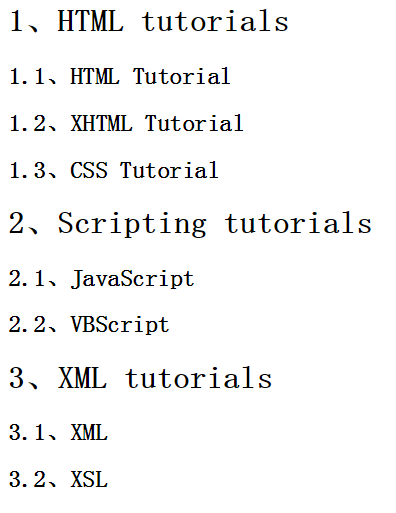一、介绍
css3为了区分伪类和伪元素,伪元素采用双冒号写法。
常见伪类——:hover,:link,:active,:target,:not(),:focus。
常见伪元素——::first-letter,::first-line,::before,::after,::selection。
::before和::after下特有的content,用于在css渲染中向元素逻辑上的头部或尾部添加内容。
这些添加不会出现在DOM中,不会改变文档内容,不可复制,仅仅是在css渲染层加入。
所以不要用:before或:after展示有实际意义的内容,尽量使用它们显示修饰性内容,例如图标。
举例:网站有些联系电话,希望在它们前加一个icon☎,就可以使用:before伪元素,如下:
<!DOCTYPE html> <meta charset="utf-8" /> <style type="text/css"> .phoneNumber::before { content:'\260E'; font-size: 15px; } </style> <p class="phoneNumber">12345645654</p>

Note:这些特殊字符的html,js和css的写法是不同的,具体可查看html特殊字符的html,js,css写法汇总。
二、content属性
::before和::after必须配合content属性来使用,content用来定义插入的内容,content必须有值,至少是空。默认情况下,伪类元素的display是默认值inline,可以通过设置display:block来改变其显示。
content可取以下值。
1、string
使用引号包一段字符串,将会向元素内容中添加字符串。如:a:after{content:""}
举例:
<!DOCTYPE html> <meta charset="utf-8" /> <style type="text/css"> p::before{ content: "《"; color: blue; } p::after{ content: "》"; color: blue; } </style> <p>平凡的世界</p>

2、attr()
通过attr()调用当前元素的属性,比如将图片alt提示文字或者链接的href地址显示出来。
<style type="text/css"> a::after{ content: "(" attr(href) ")"; } </style> <a href="http://www.cnblogs.com/starof">starof</a>

3、url()/uri()
用于引用媒体文件。
举例:“百度”前面给出一张图片,后面给出href属性。
<style> a::before{ content: url("https://www.baidu.com/img/baidu_jgylogo3.gif"); } a::after{ content:"("attr(href)")"; } a{ text-decoration: none; } </style> --------------------------- <body> <a href="http://www.baidu.com">百度</a> </body>
效果:

4、counter()
调用计数器,可以不使用列表元素实现序号功能。
配合counter-increment和counter-reset属性使用:
h2:before { counter-increment: chapter; content: "Chapter " counter(chapter) ". " }
代码:
<style> body{ counter-reset: section; } h1{ counter-reset: subsection; } h1:before{ counter-increment:section; content:counter(section) "、"; } h2:before{ counter-increment:subsection; content: counter(section) "." counter(subsection) "、"; } </style> ------------------------------------------------ <body> <h1>HTML tutorials</h1> <h2>HTML Tutorial</h2> <h2>XHTML Tutorial</h2> <h2>CSS Tutorial</h2> <h1>Scripting tutorials</h1> <h2>JavaScript</h2> <h2>VBScript</h2> <h1>XML tutorials</h1> <h2>XML</h2> <h2>XSL</h2> </body>
效果:

了解更多可参考:https://developer.mozilla.org/en-US/docs/Web/Guide/CSS/Counters
三、使用
1、清除浮动
清除浮动方法有多种,现在最常用的就是下面这种方法,仅需要以下样式即可在元素尾部自动清除浮动
.cf:before, .cf:after { content: " "; display: table; } .cf:after { clear: both; } .cf { *zoom: 1; }
2、模拟float:center的效果
float没有center这个取值,但是可以通过伪类来模拟实现。
这个效果实现很有意思,左右通过::before float各自留出一半图片的位置,再把图片绝对定位上去。
核心css如下:
#page-wrap { width: 60%; margin: 40px auto; position: relative; } #logo { position: absolute; top: 0; left: 50%; margin-left: -125px; } #l, #r { width: 49%; } #l { float: left; } #r { float: right; } #l:before, #r:before { content: ""; width: 125px; height: 250px; } #l:before { float: right; } #r:before { float: left; }
